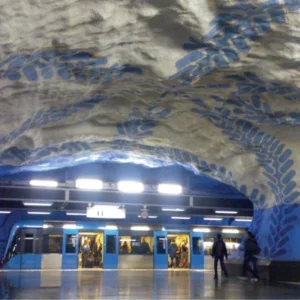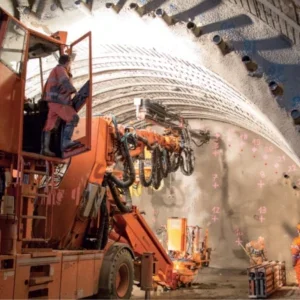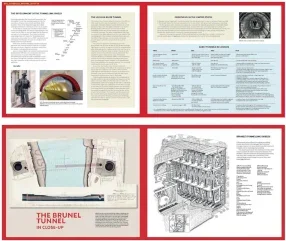
‘Tunnelling Tales, Fifty years of the British Tunnelling Society’ was published recently and in the Foreword it explains the challenges that the Covid pandemic gave to getting this book to press. That advantage that Covid gave was that allowed a plethora of contributions from engineers, technicians, miners, site agents, plant operators, and many others, to contribute stories set up by their day jobs in tunnelling. I must declare that my meagre contribution is there, and I was delighted when I was asked to review the work in its entirety. And it is an entirety of all 816 pages of it, but a great read nevertheless.
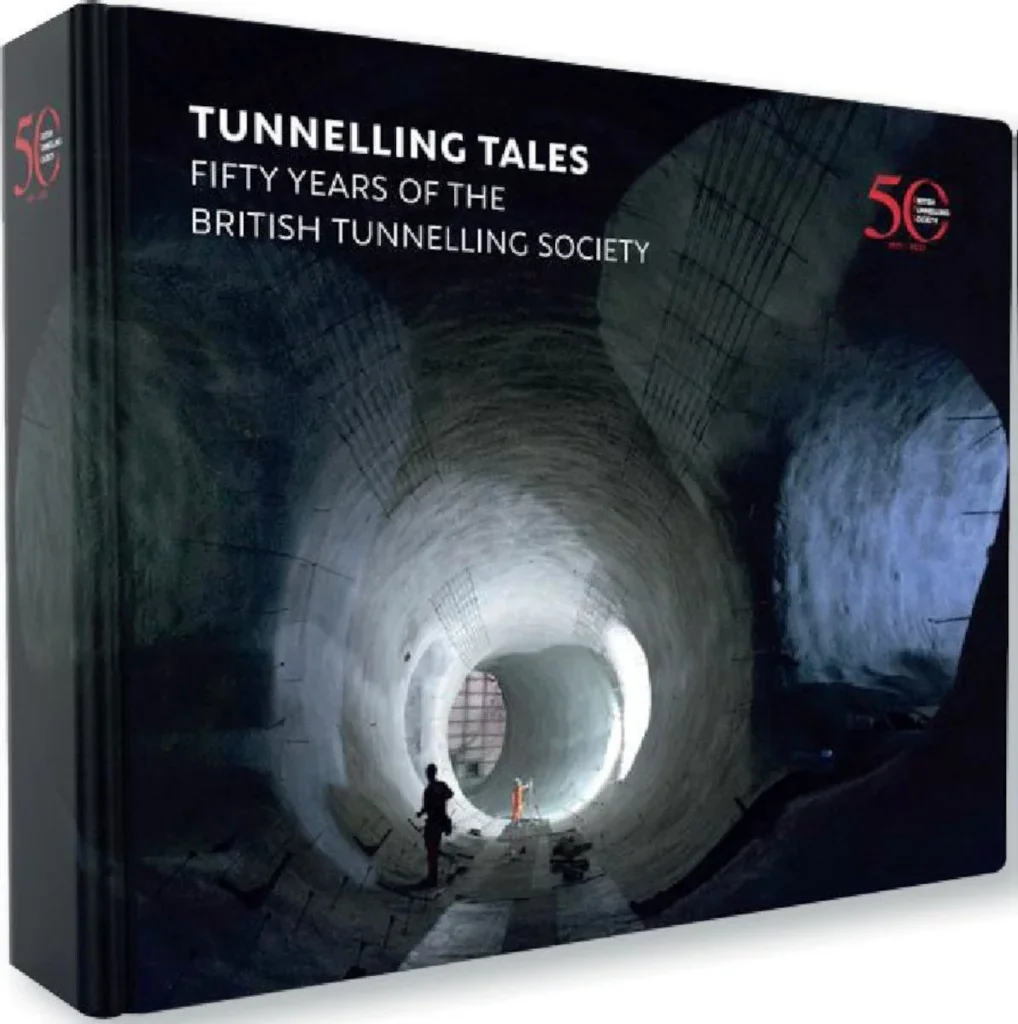
It was when I got to page 727 that I was reminded of the book that really got me into tunnelling: David Morrell’s ‘Indictment: Power and Politics in the Construction Industry’. This is a hard-hitting book on the Kariba Dam Project and the problems arising around the formation of the power cavern on the scheme. I remember thinking that this was a real adventure story, thrilling and captivating in the struggle between contractor and engineer and the drama about keeping the company solvent.
Having said that, ‘Tunnelling Tales’ does it for me. Ken Spiby and team have compiled a celebratory work of stories associated with people, projects, places and, of course, tunnels over the 50 years since the inception of the British Tunnelling Society.
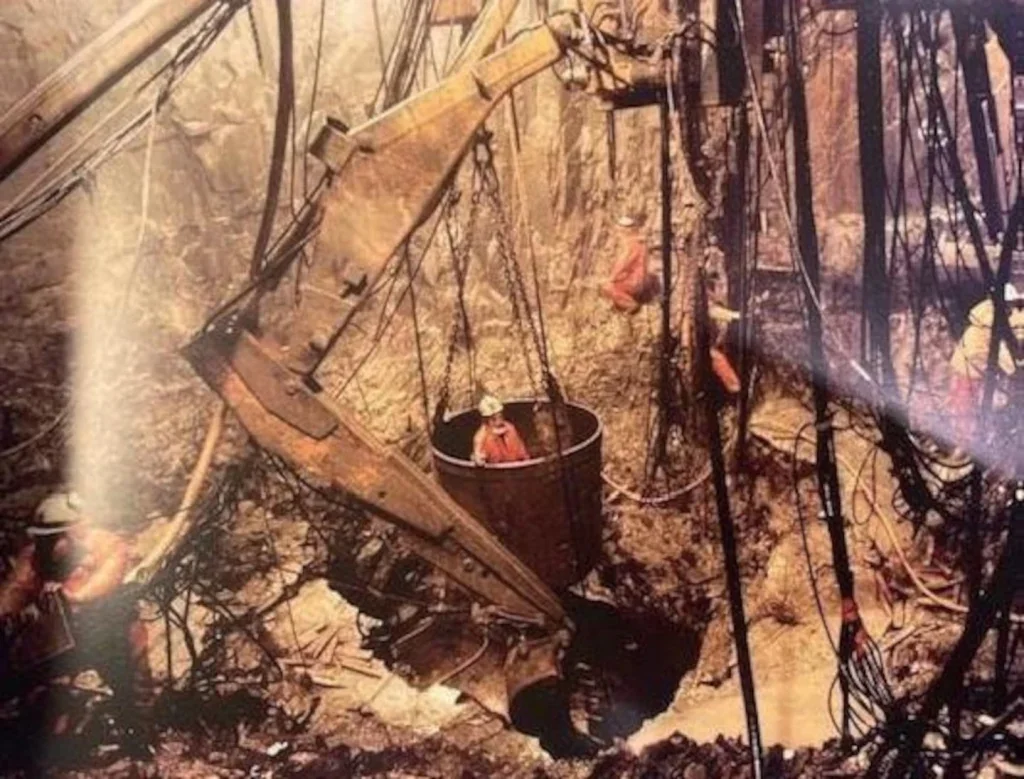
The book starts with a history lesson set around the Brunel family. Throughout the book the approach has been to include archive drawings, cherished photographs, helpful figures, hand sketches and informed pieces from various experts. These are intertwined with stories from the tunnel face, the material conveyor and even the tunnel boring machine, as well as the design office. Here, Jane Stancliffe, former Trustee of The Brunel Museum, takes us through the history of the Thames Tunnel, the Brunel Museum and its association with the British Tunnelling Society.
The reader is then taken through the founding of the British Tunnelling Society, the before and then as the book progresses all through the various aspects of its structure, its Past Chairs, the Medal winners, its operation within the Institution of Civil Engineers (ICE) and other associated societies, such as the British Geotechnical Association (BGA) and all leading to thoughts on the future. The Appendices are a ‘data miners’ vault of lists of evening meetings, committee members across the years, and other tunnelling ingredients.
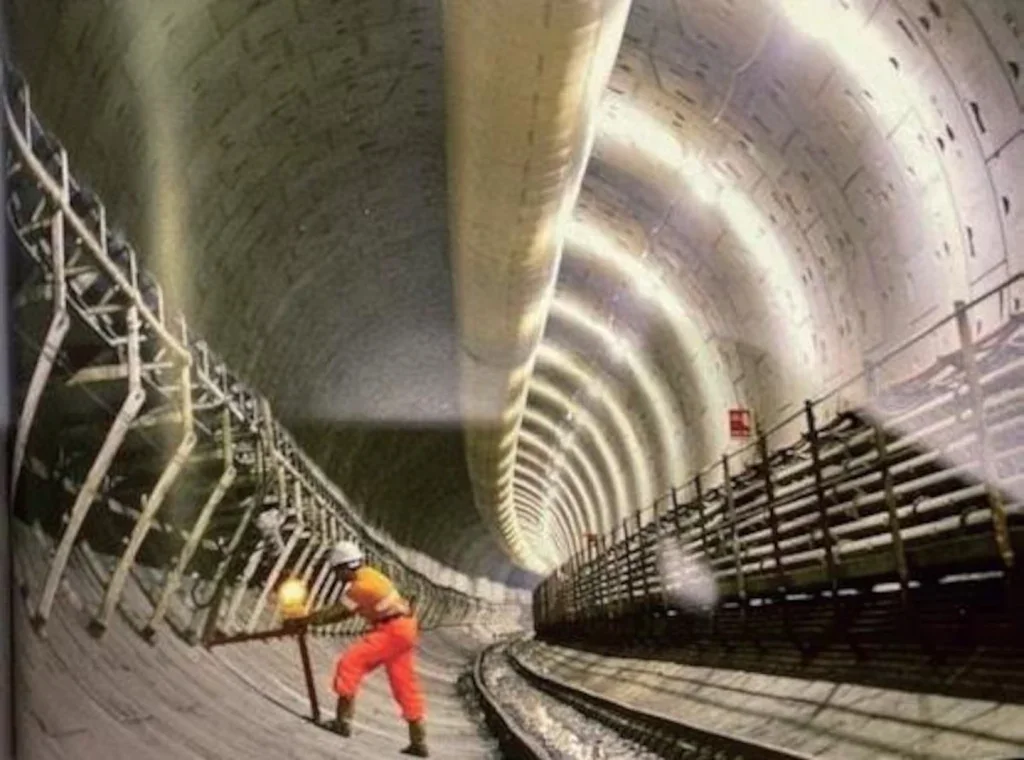
Sections intervene in this structure that describe all manner of tunnelling projects: major under river tunnels, Scottish hydropower, metros, airport tunnels, sewers, and road schemes. These are carefully woven through pieces taken through the decades highlighting the movements in market trends, political scenes and project types.
Major projects such as the Channel Tunnel, Channel Tunnel Rail Link (CTRL 1 and 2), HS2, Crossrail, Jubilee Line Extension, and Tideway (to name but a few) are described in their own sections with tales from those that worked, designed, detailed, supplied and crafted the projects.
For example, the nuggets of information about the Victoria Line are superb with a map of the scheme (page 66) framing a superb range of tales and archive photographs throughout.
The personal tales dotted throughout this tome are excellent. The story about a flat cap, the jaguar saloon and some jacks (page 73) and another describing the “hairdryer treatment” on the Cairo Wastewater Project (page 303), maybe familiar to some.
Others are standout. The Second World War escape tunnel and shafts (Page 220), lying hidden in an area of a Swiss road job for decades, only to become problematic on the construction work later, is a fascinating read on how the history of a site is vital for a successful tunnelling project.
And, then, there is the tale about the “paperweight”, but no page number there, as I will let you discover that yourself!
The book is a great celebration of the British Tunnelling Society’s 50th year, it has the data, the lists, the history and the tales, all laid out for the reader. This is a superb companion for those that are in, dealt with, or have family connections in the tunnelling industry. It is also worth its value as a record of tunnelling history and I would recommend it.
All I would add is rollover ‘Indictment: Power and Politics in the Construction Industry’, this is the tunnelling book for me.
GET THE BTS BOOK
The celebratory book can be ordered via the British Tunnelling Society website: www.britishtunnelling.com Published by the British Tunnelling Society, the book is available in two formats – Hardback ISBN 978-0-9546106-6-1) and eBook (ISBN 978-0-9546106-7-8).



